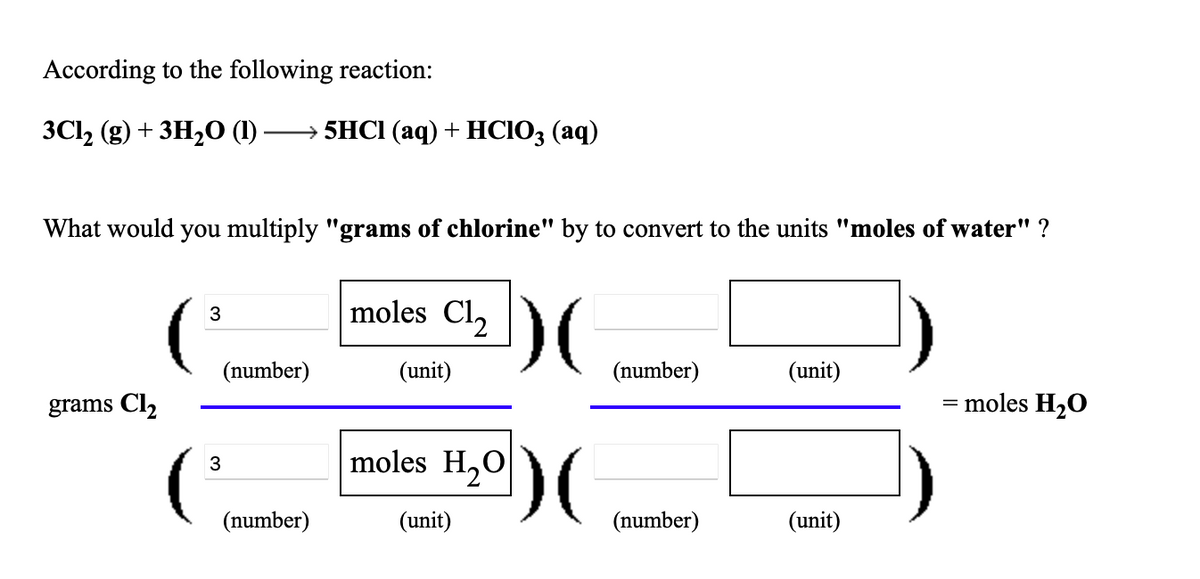When perchloric acid (HCIO4) reacts with tetraphosphorus decaoxide, phosphoric acid and dichlorine heptaoxide are produced. The balanced equation for this reaction is: 12HCIO4 (aq) + P4010 (s) 4H3PO04 (aq) + 6Cl,0, (1) If 2 moles of tetraphosphorus decaoxide react, The reaction consumes moles of perchloric acid (HCIO4) The reaction produces moles of phosphoric acid and moles of dichlorine heptaoxide
When perchloric acid (HCIO4) reacts with tetraphosphorus decaoxide, phosphoric acid and dichlorine heptaoxide are produced. The balanced equation for this reaction is: 12HCIO4 (aq) + P4010 (s) 4H3PO04 (aq) + 6Cl,0, (1) If 2 moles of tetraphosphorus decaoxide react, The reaction consumes moles of perchloric acid (HCIO4) The reaction produces moles of phosphoric acid and moles of dichlorine heptaoxide
Introductory Chemistry: A Foundation
9th Edition
ISBN:9781337399425
Author:Steven S. Zumdahl, Donald J. DeCoste
Publisher:Steven S. Zumdahl, Donald J. DeCoste
Chapter15: Solutions
Section: Chapter Questions
Problem 3CR
Related questions
Question

Transcribed Image Text:When perchloric acid (HCIO4) reacts with tetraphosphorus decaoxide, phosphoric acid and dichlorine heptaoxide are produced.
The balanced equation for this reaction is:
12HCIO, (аq) + P,010 (8)
→4H3PO4 (aq) + 6Cl,O, (1)
If 2 moles of tetraphosphorus decaoxide react,
The reaction consumes
moles of perchloric acid (HCIO4)
The reaction produces
moles of phosphoric acid and
moles of dichlorine heptaoxide

Transcribed Image Text:According to the following reaction:
3C12 (g) + 3H20 (1)
+ 5HCI (аq) + HСІО; (аq)
What would you multiply "grams of chlorine" by to convert to the units "moles of water" ?
moles Cl2
3
(number)
(unit)
(number)
(unit)
grams Cl2
= moles H2O
moles H,0
3
(number)
(unit)
(number)
(unit)
Expert Solution
This question has been solved!
Explore an expertly crafted, step-by-step solution for a thorough understanding of key concepts.
This is a popular solution!
Trending now
This is a popular solution!
Step by step
Solved in 2 steps

Knowledge Booster
Learn more about
Need a deep-dive on the concept behind this application? Look no further. Learn more about this topic, chemistry and related others by exploring similar questions and additional content below.Recommended textbooks for you

Introductory Chemistry: A Foundation
Chemistry
ISBN:
9781337399425
Author:
Steven S. Zumdahl, Donald J. DeCoste
Publisher:
Cengage Learning

Chemistry: Principles and Reactions
Chemistry
ISBN:
9781305079373
Author:
William L. Masterton, Cecile N. Hurley
Publisher:
Cengage Learning

Chemistry for Engineering Students
Chemistry
ISBN:
9781285199023
Author:
Lawrence S. Brown, Tom Holme
Publisher:
Cengage Learning

Introductory Chemistry: A Foundation
Chemistry
ISBN:
9781337399425
Author:
Steven S. Zumdahl, Donald J. DeCoste
Publisher:
Cengage Learning

Chemistry: Principles and Reactions
Chemistry
ISBN:
9781305079373
Author:
William L. Masterton, Cecile N. Hurley
Publisher:
Cengage Learning

Chemistry for Engineering Students
Chemistry
ISBN:
9781285199023
Author:
Lawrence S. Brown, Tom Holme
Publisher:
Cengage Learning

World of Chemistry, 3rd edition
Chemistry
ISBN:
9781133109655
Author:
Steven S. Zumdahl, Susan L. Zumdahl, Donald J. DeCoste
Publisher:
Brooks / Cole / Cengage Learning

World of Chemistry
Chemistry
ISBN:
9780618562763
Author:
Steven S. Zumdahl
Publisher:
Houghton Mifflin College Div

Chemistry & Chemical Reactivity
Chemistry
ISBN:
9781337399074
Author:
John C. Kotz, Paul M. Treichel, John Townsend, David Treichel
Publisher:
Cengage Learning